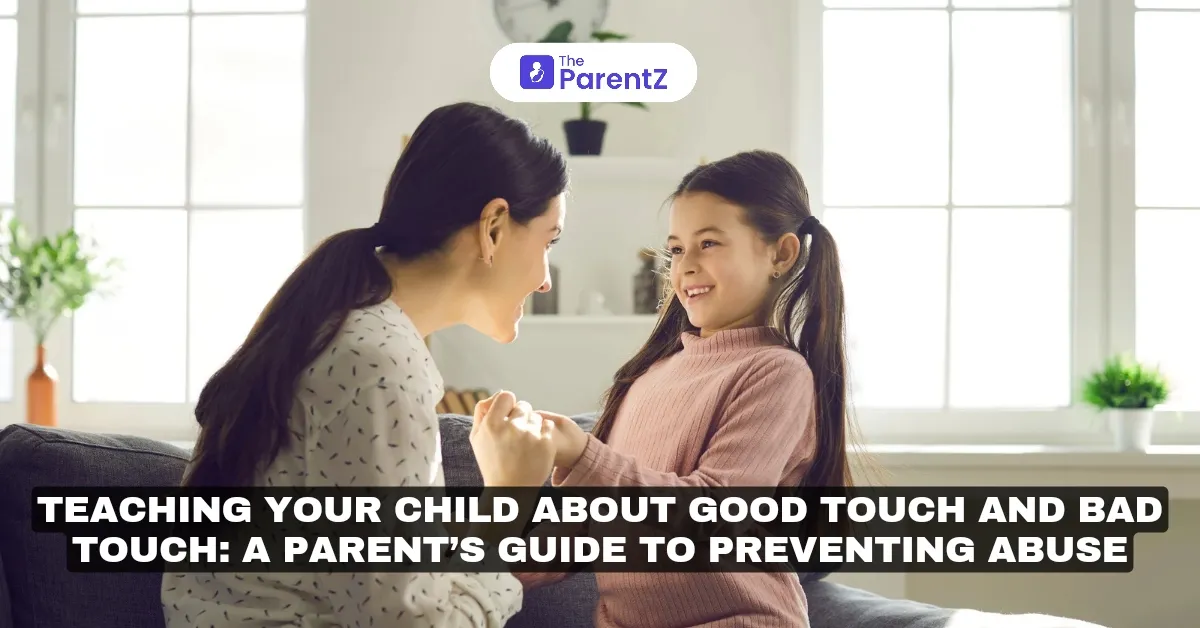As a parent, one of the most important conversations you can have with your child is about the difference between good touch and bad touch. Educating your child about their body, boundaries, and what constitutes appropriate and inappropriate behavior is crucial for preventing abuse. Here’s a comprehensive guide to help you navigate this sensitive topic.
Parental tips to prevent child abuse
1. Start the Conversation Early
It’s never too early to start talking to your child about their body and personal boundaries. The earlier you begin, the more comfortable they will be discussing these topics as they grow older.
Tip: Use simple language that is appropriate for your child’s age. For younger children, you can start by teaching them the correct names for their body parts.
2. Explain the Concept of Good Touch vs. Bad Touch
Help your child understand that there are different kinds of touches and that not all of them are okay. Good touches are those that make them feel safe, comfortable, and loved, such as a hug from a parent. Bad touches are those that make them feel uncomfortable, scared, or confused.
Tip: Use examples to explain the difference, such as "A hug from grandma is a good touch, but if someone touches you in a way that makes you feel uncomfortable, that’s a bad touch."
3. Teach Them to Trust Their Feelings
Encourage your child to trust their instincts and feelings. Let them know that it’s okay to say "no" if someone touches them in a way that makes them feel uneasy, even if it’s someone they know.
Tip: Reinforce that their body belongs to them, and they have the right to decide who touches it and how.
4. Establish Open Communication
Create a safe and open environment where your child feels comfortable coming to you with any concerns or questions. Let them know that they can always talk to you if something happens that makes them uncomfortable.
Tip: Remind your child that they won’t get in trouble for telling you about a bad touch, and it’s important to speak up if something doesn’t feel right.
5. Discuss the Concept of Secrets
Abusers often use secrecy to manipulate and control their victims. Teach your child that some secrets, especially those that make them feel bad or scared, should never be kept.
Tip: Explain that it’s okay to keep fun secrets, like a surprise party, but secrets about touching or other inappropriate behavior should always be shared with a trusted adult.
6. Empower Them with a Safety Plan
Equip your child with a safety plan in case they find themselves in an uncomfortable situation. This could include finding a trusted adult, calling a parent, or using a code word to signal that they need help.
Tip: Role-play different scenarios with your child so they feel confident in how to respond if they ever face a bad touch.
7. Educate Them About Stranger Danger and Safe Adults
While it’s important to teach children about the dangers of strangers, it’s equally crucial to discuss that not all strangers are bad and that sometimes, people they know can also be unsafe.
Tip: Identify safe adults in your child’s life, such as teachers, doctors, and family friends, and explain that they can go to these people if they ever feel unsafe.
Conclusion
Teaching your child about good touch and bad touch is a critical step in preventing abuse and ensuring their safety. By starting the conversation early, fostering open communication, and empowering them with knowledge and a safety plan, you can help protect your child from harm. Remember, the goal is to equip them with the tools they need to recognize inappropriate behavior and feel confident in speaking up if something doesn’t feel right.









Be the first one to comment on this story.